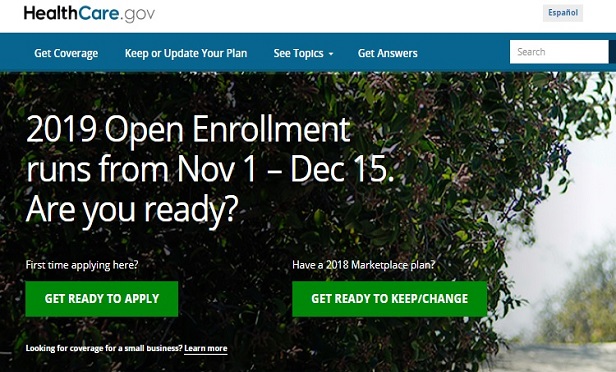
 (Image: CMS)
(Image: CMS)
Private health insurers appear to be doing a better job of keeping, and adding, working-age adult enrollees in states that use HealthCare.gov than in other states.
Here's what happened to private insurance coverage rates for adults ages 18 through 64 in the first half of this year, when compared with coverage rates for 2017:
Pure HealthCare.gov states: Increased to 69.2%, from 68.4%.
HealthCare.gov partnership states: Increased to 73.7%, from 73.3%.
State-based exchange states: Fell to 67.9%, from 69.5%.
Analysts at the National Center for Health Statistics is an arm of the U.S. Centers for Disease Control and Prevention (CDC), have reported those figures in a new batch of data from the National Health Interview Survey (NHIS) program.
The center runs the NHIS program to find out what's happening in the U.S. health care system. The survey team collected information from about 39,000 people during the first half of 2018.
NHIS managers classify many different forms of as private health insurance. The definition includes individual or family coverage purchased through an Affordable Care Act public exchange as well as employer-sponsored coverage and individual coverage purchased outside the public exchange system.
Overall Insured and Uninsured Rates
The overall NHIS private health coverage use rate for U.S. residents ages 18 to 65 fell to 69.2% in the first half of this year, from 69.3% in 2017.
The NHIS uninsured rate for that age group fell to 12.5% in the first half of this year, from 12.8% in 2017.
Uninsured rates, by state type:
Pure HealthCare.gov states: Fell to 15.7%, from 16.2%.
HealthCare.gov partnership states: Fell to 7.5%, from 8.9%.
State-based Exchange rates: Increased to 9.1%, from 8.7%.



